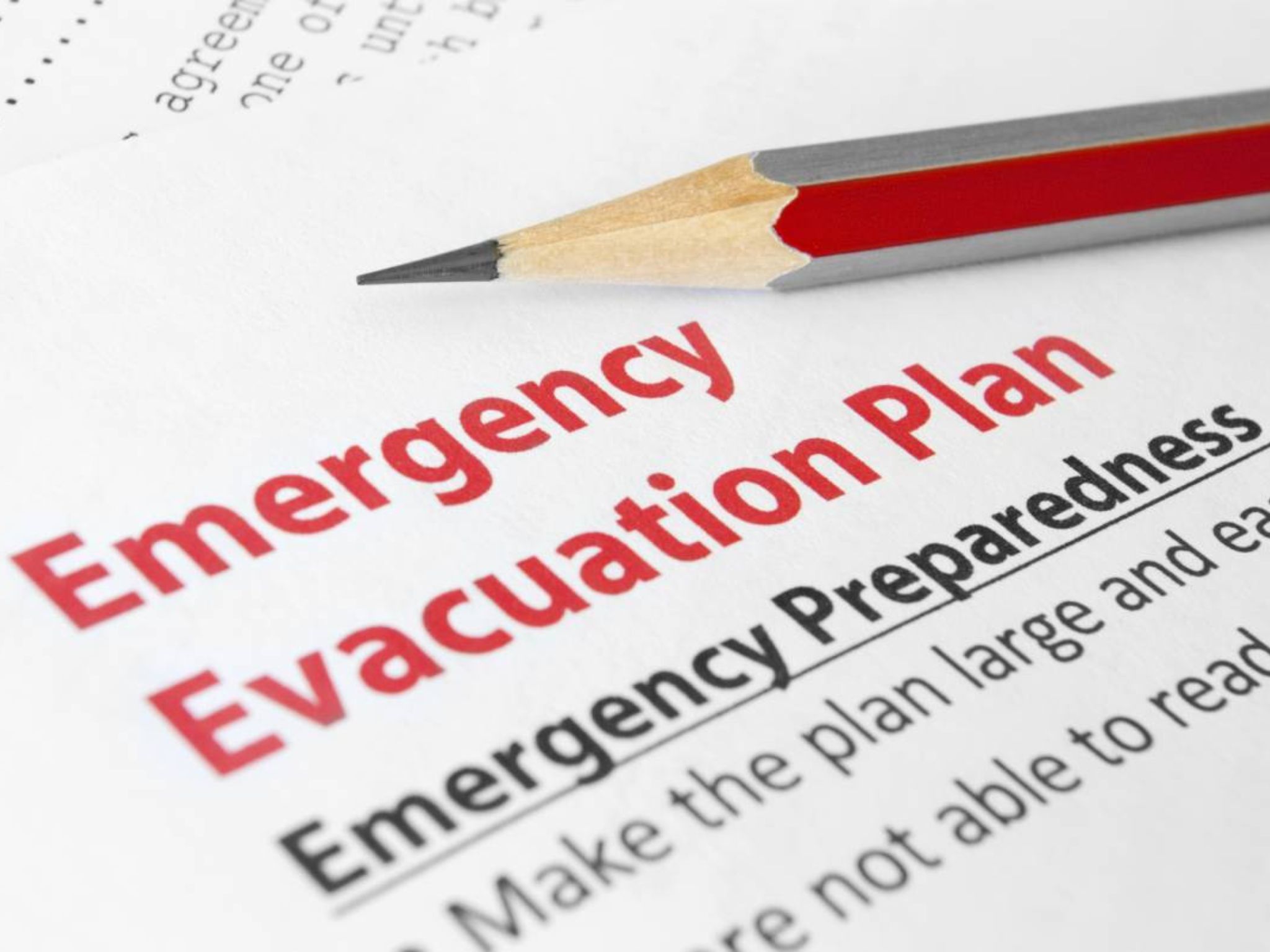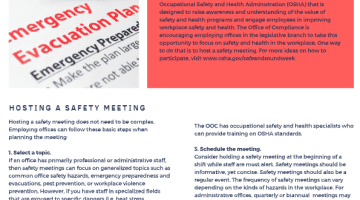Hosting a safety meeting does not need to be complex. Employing offices can follow these basic steps when planning the meeting:
1. Select a topic
If an office has primarily professional or administrative staff, then safety meetings can focus on generalized topics such as common office safety hazards, emergency preparedness and evacuations, pest prevention, or workplace violence prevention. However, if you have staff in specialized fields that are exposed to specific dangers (i.e. heat stress, hazardous chemicals, permit-required confined spaces), safety meetings should address specific hazards and the corresponding OSHA standards that are designed to ensure worker safety. Safety meetings can also be used to discuss new standards or safety protocols.
2. Have a qualified presenter
Some employing offices have a safety coordinator who is responsible for ensuring compliance with safety and health regulations in the workplace, and who can present to staff on various safety-related topics. If there is no safety coordinator, employers can designate a knowledgeable staff member to coordinate presenting information, either by finding relevant materials or by bringing in technical experts to speak.
The OOC has occupational safety and health specialists who can provide training on OSHA standards.
3. Schedule the meeting
Consider holding a safety meeting at the beginning of a shift while staff are most alert. Safety meetings should be informative, yet concise. Safety meetings should also be a regular event. The frequency of safety meetings can vary depending on the kinds of hazards in the workplace. For administrative offices, quarterly or biannual meetings may be sufficient. If employees work in more hazardous conditions, a daily safety briefing at the start of the day or a weekly “toolbox talk” may be required.
4. Conduct the meeting
Build in time to ensure that all key information is covered. Allow time for questions. Consider providing handouts to reinforce the main points of the presentation, and including a brief informal survey or quiz at the end to ensure that employees understand what has been taught.

